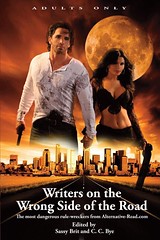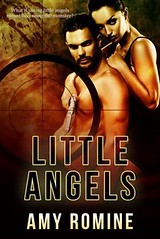When this movie first came out in the theater I was less than excited. It didn’t interest me. My husband, as a treat to our five year old son, took him to see it.
Taking the kids to see animated movies, with the exception of Pixar is usually a crap shoot, but we suffer through. In this case, when my husband and son returned that afternoon, our son was bouncing of the walls babbling about how awesome the movie was. This is not unusual. My husband, though, was also very complimentary and kept talking about not only the animation but the main character, Toothless, the dragon.
Months have gone by and “How to Train your Dragon” is now on HBO. We recently sat down one night as a family to watch it.
I loved it, no I will preface this. I loved Toothless.
Toothless has joined the ranks of my favorite silent characters. These include: Wall-E, Silent Bob, R2D2, Sam (Benny & Joon), Pixar’s Lamp, Teller (Penn & Teller), The Red Balloon (from French movie of the same title), Wilson (Castaway) & The Tramp (Charlie Chaplin).
Chaplin, the master of the silent movie, was, and still is considered the master of conveying emotion, or character, without the use of dialog. One of the challenges every author faces is the ability to convey emotion through words. This can be done via dialog or description. An exercise most writers are tasked with in the very beginning of their pros is to write a scene completely devoid of description. The only venue you have to convey your theme is dialog.
On the opposite end of the spectrum, what if you had no dialog as a venue, only description? As ours is not a visual art, this poses quite a challenge.
Visual expression, as brilliantly shown in the character Toothless, is astounding in the ability to have such an impact. The emotions attached to a silent character run a different, deeper, path than those who have a voice. Another impressive modern example of this is Kurt Russell in the movie “Soldier” released in 1998. While this film was released with little attention from the populace, it is a touching and powerful example of expression without words.
But how do we as writers describe the emotional expression of a character and exact the same results? How do we describe anger, love, hate, frustration without words?
This of course leads us back to the #1 rule of fiction writing, show, don’t tell.
One of the things I have started to do is to watch these characters and then describe their facial movements, their stance, and their eyes, trying to dissect what emotion is coming across, and how.
So here is an exercise for all those who are interested in exploring this facet of our world. Here is a picture of Toothless. Use words to describe the scene and what is happening, the emotion involved in the scene.
Basically, recreate the picture in words. When finished the you should be able to read the description and form the same image without the picture.
Share it with us! I am excited to see what you come up with!
۞۞GIVEAWAYS۞۞ --
A giveway with Larion Wills Closes 10th June
A giveaway with Mahalia Levey Closes 8th June
*All giveaways are open to all WORLDWIDE unless otherwise stated.
(and claim your free e-books!)
Group Rules*::No Promo's Mondays-Thursdays ONLY chat
Promo companies are limited to two posts per day per company on Fridays-Sundays keeping within the rules above. Thank you!
*The only exception to these rules are for our affiliate authors who can post promos any time.
Group Rules*::No Promo's Mondays-Thursdays ONLY chat
Promo companies are limited to two posts per day per company on Fridays-Sundays keeping within the rules above. Thank you!
*The only exception to these rules are for our affiliate authors who can post promos any time.
How to Train your Dragon - A Study of Wordless Expression
 Reviewed by Amy J Romine
on
8:06 am
Rating:
Reviewed by Amy J Romine
on
8:06 am
Rating:
 Reviewed by Amy J Romine
on
8:06 am
Rating:
Reviewed by Amy J Romine
on
8:06 am
Rating:













That is a great try...it is hard isn't? lol!
ReplyDelete